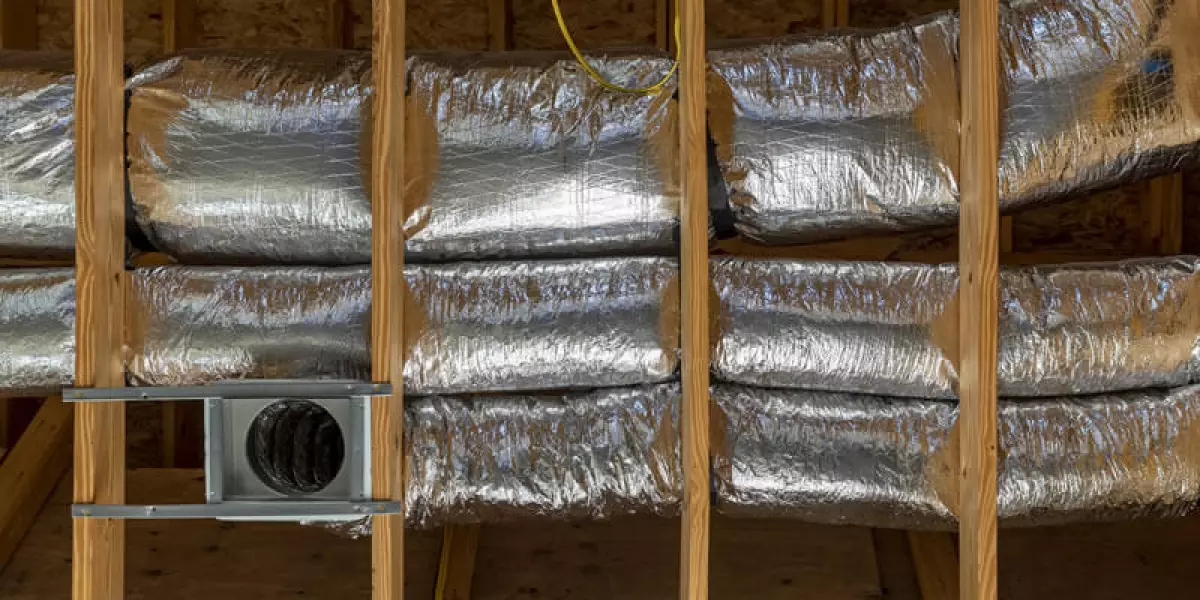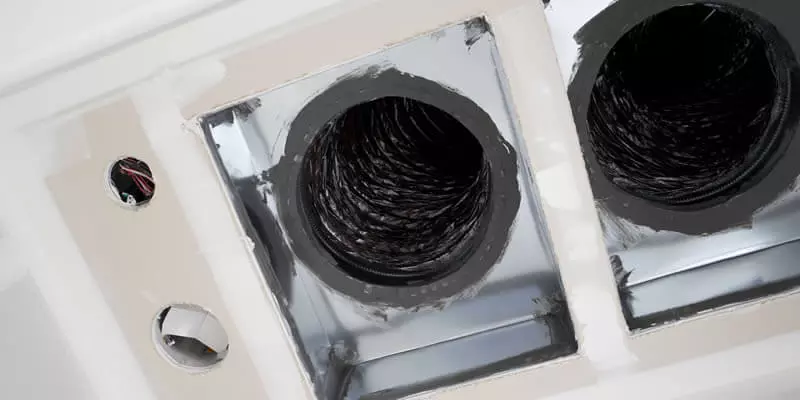Are you planning to build a new home and wondering about the cost of installing an HVAC system? In this article, we will explore the average costs and factors that can affect the price. Whether you're considering a central AC and furnace, a heat pump system, a dual fuel system, a packaged HVAC system, or a mini split system, we've got you covered. Let's dive in!
HVAC System Cost for New Construction
The cost of installing a complete central HVAC system in new construction, including ductwork, can range from $16,500 to $37,000. Keep in mind that if you opt for high-end equipment and air quality accessories, the cost can exceed $40,000.
Factors Affecting Cost
Several factors contribute to the overall cost of an HVAC system in new construction. These include the system type and size, efficiency, performance, extent of ductwork, features and extras, as well as the brand and where you live. It's important to consider these factors when making your decision.
Average Cost
On average, the cost for an HVAC system in new construction is around $26,500. This price includes the complete new home HVAC system, which typically consists of central air conditioning and furnace, a heat pump and air handler, or a mini split system. The installation also covers the necessary electrical and gas line infrastructure, including a thermostat and duct runs.
 Image: HVAC ducting in new construction home
Image: HVAC ducting in new construction home
Various HVAC System Types
When it comes to HVAC systems for new homes, you have several options to consider. Let's take a closer look:
1. Central AC & Furnace
This is the most common HVAC system type in the US. It typically costs between $16,500 and $35,000. Gas furnaces are the most common, but oil furnaces are used mostly in the Northeast, while electric furnaces are more common in warm climates.
- Cooling SEER2 range: 12 - 26
- Furnace AFUE range: 80% and 90% to 99%
The system includes an outdoor condensing unit, an indoor gas, oil, or electric furnace that also acts as the air handler for air conditioning, an evaporator coil, supply and return ductwork, a thermostat, sheet metal connections, and more.
2. Heat Pump System
Heat pumps are gaining popularity in moderate and warm climates as they efficiently provide both heating and AC. The cost ranges from $17,600 to $32,600.
- Cooling SEER2 range: 13 - 24
- Heating HSPF2 range: 7.8 - 10.5
A heat pump system includes an outdoor condensing unit/indoor coil, an air handler, ductwork and connections, electrical connections, a thermostat, and more.
3. Dual Fuel System
These systems combine a gas furnace with a heat pump. They offer high efficiency but come at a higher cost. Expect to pay between $17,850 and $37,000 for a dual fuel system.
The heat pump heats the home when the outdoor temperature is above about 35F, and the furnace takes over when the temperature drops. The system can be customized based on your preferences.
4. Package HVAC System
Package systems integrate the heating and air conditioning equipment into a single outdoor unit. They are not as efficient as standard split systems and cost between $14,750 and $26,500.
- AC SEER2 range: 12 - 16
- Heat pump HSPF2 range: Up to 7.5
- Furnace AFUE range: 80%
Your options include an AC & gas furnace package system or a heat pump system. Ductwork and other components are required for installation.
5. Mini Split HVAC System
Mini split heat pumps are gaining market share due to their high efficiency. They are a great choice for additions in new construction. The cost ranges from $6,900 to $11,680.
The main factor affecting the cost is the number and type of indoor units installed. A mini split HVAC system does not require ductwork.
 Image: Outdoor AC units being connected to new HVAC system
Image: Outdoor AC units being connected to new HVAC system
Complete HVAC System Cost Factors
To estimate the cost of your HVAC system, consider the following factors:
- System Size: HVAC systems range in size from 1.5 to 5.0 tons for ACs and heat pumps. Furnaces range from 40,000 to 150,000 BTUs.
- Efficiency: Furnace efficiency ranges from 80% to 99%, while AC efficiency ranges from 12 SEER2 to 25 SEER2.
- Performance: Choose between single-stage, two-stage, variable capacity options, or all-variable capacity for mini split heat pumps.
- Ductwork: The layout of your home and where the indoor unit is placed affects the length of the ductwork runs.
- Features and Extras: Consider advanced air filtration equipment, UV lights, and zoning equipment.
- Quality: Different brands offer premium, average, and entry-level systems.
- Brand Rating: Top-rated brands include Carrier, American Standard, Rheem, Trane, and Lennox.
- Location: The cost of living varies by region, impacting overall HVAC system prices.
- Installation: Hiring a specialized company for new construction may provide better processes and pricing.
 Image: New home construction HVAC system being installed
Image: New home construction HVAC system being installed
Additional Costs and Considerations
Apart from the HVAC system itself, there are other expenses to keep in mind:
- Permits and Inspections: You'll need mechanical and electrical permits, including inspections, which can cost between $400 and $1,200.
- Labor Costs: Hiring an HVAC company for installation can range from $3,600 to $8,600, depending on the system type. Certified technicians and service helpers charge an hourly fee.
- Installation Time: Rough wiring and mechanical/gas lines take 1-2 days, ductwork installation takes 2-4 days, and installing the equipment takes 2-5 days.
DIY or Hire a Pro?
While most homeowners hire licensed contractors for HVAC system installation, there are some DIY options. If you're comfortable with electrical and gas lines, you can do some of the work yourself. However, it's crucial to have a certified HVAC technician inspect and charge the system.
For DIY enthusiasts, MrCool and Klimaire offer DIY mini split systems that can be installed without hiring a professional. These systems come with full refrigerant charges and detailed installation instructions.
Ductwork can also be a DIY project, but it's essential to ensure proper layout and sizing for optimal airflow and temperature balance throughout your home.
Final Thoughts
Installing an HVAC system in a new home construction is a significant investment. By considering the system type, size, efficiency, and labor costs, you can make an informed decision. Remember to choose a reputable brand, factor in additional features and extras, and comply with necessary permits and inspections. With careful planning, you'll ensure comfort and efficiency for years to come.
















